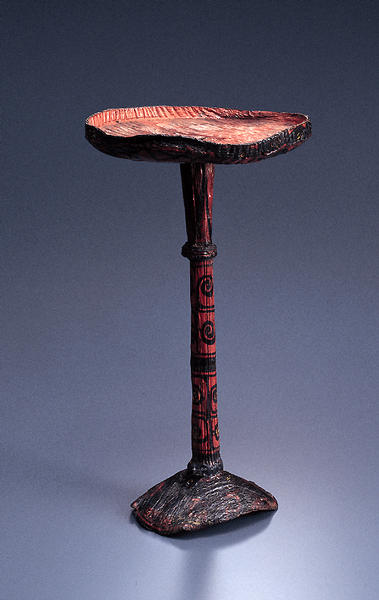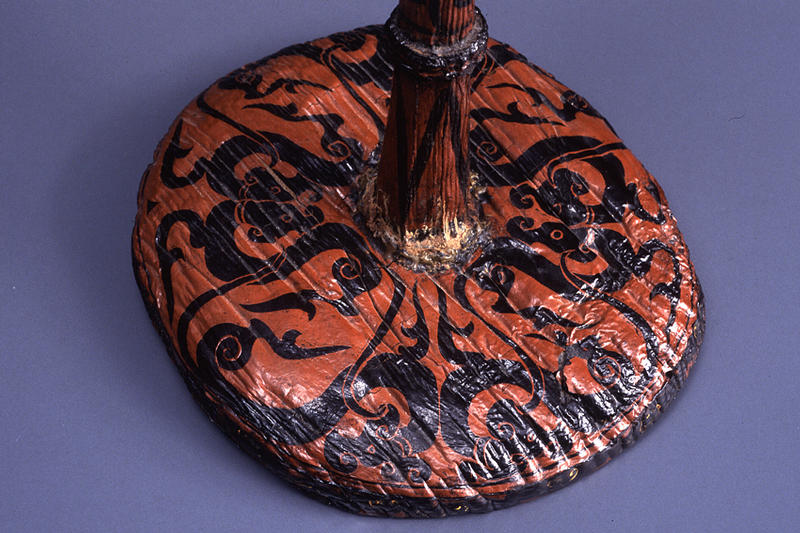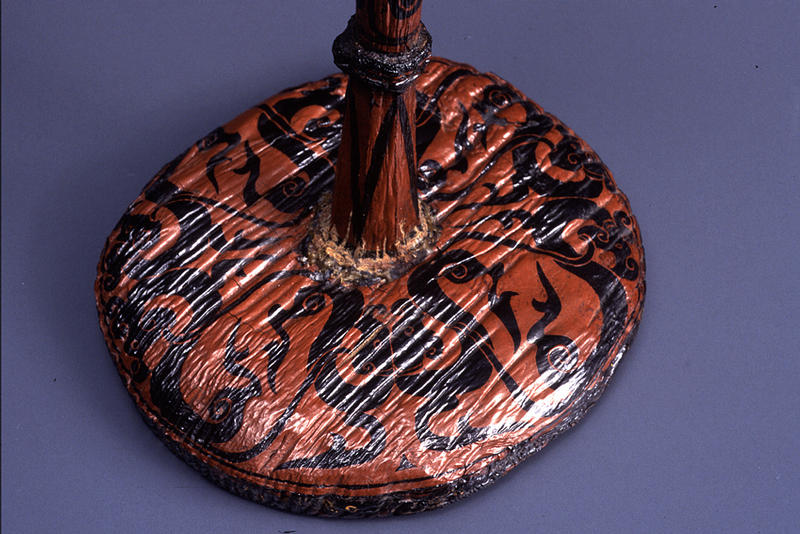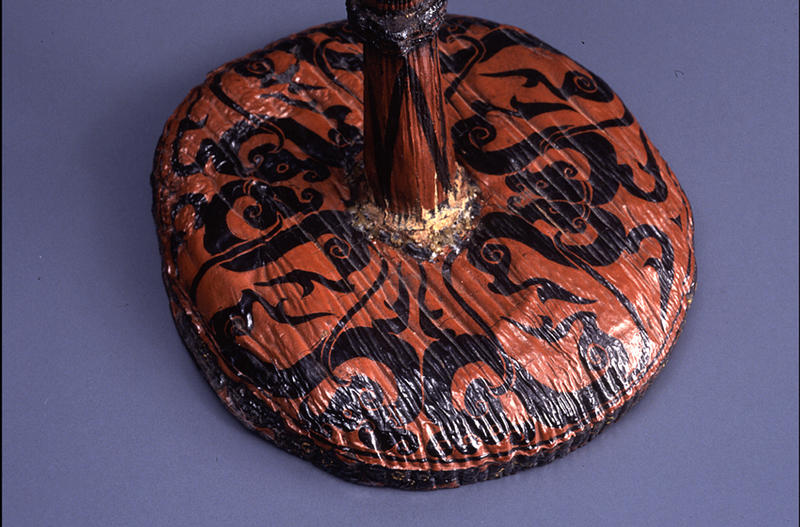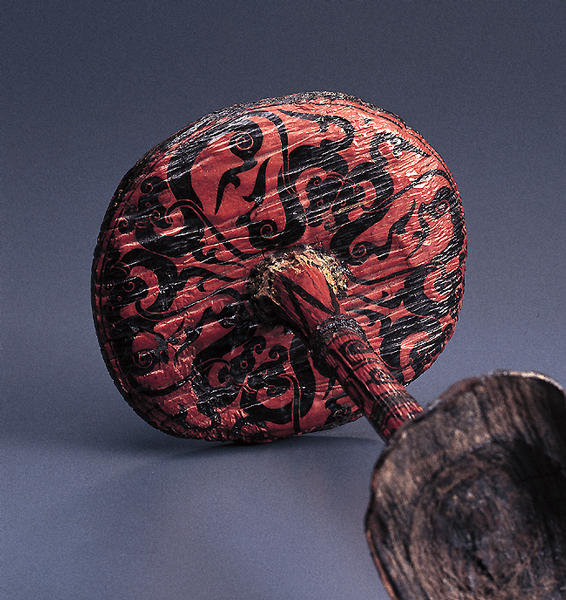漆脚台
- 中国
- 中国・東周時代
- 前5-前4世紀
- 木、漆
- H-26
この優雅に形づくられた背の高い漆塗りの台は円形の基台・軸・浅い皿の三つの木製の部分で構成され、それらはほぞによって連結されている。軸は彫りだしでほぞが切られ、その表面にはそれを分割する凸帯が巡らされている。材は乾燥して各所で収縮しており、漆の上塗りに皺がよることを余儀なくしている。しかし古代の漆工芸の他の諸作例と比較すると、本作は極めて保存状態がよい。
Catalogue Entry
This elegantly shaped, tall lacquer stand consists of three separate wooden sections: a circular base, a stem, and a shallow dish that have been joined together by a mortise-and-tenon system. The stem has been carved and the tenons cut. A raised ring marks the surface of the stem. The wood has dried out and shrunk in places, forcing the lacquer coating to wrinkle, but, by comparison with other examples of ancient lacquer, this piece is extremely well preserved.
The surface is decorated in black, red, and yellow lacquer, pigmented with lamp black, cinnabar, and ocher, respectively. The top element is decorated with four pairs of black zoomorphs left in reserve on a red ground on the outside and painted red on the inside. The stem is decorated with black chevrons, also left in reserve, below the raised ring and black doubled S-scrolls left in reserve above the ring. The base is desiccated and creased but appears to have been decorated with another pair of stylized zoomorphs on the outside and painted black on the underside. Faint traces of yellow visible along the rim enliven the otherwise black-and-red decoration.
An identical lacquered stand, formerly in the collection of Fritz L-Beer, is now in the British Museum, London.1 Both stands were originally acquired from John Hadley Cox of Washington, D.C., who is said to have obtained them in Changsha, Hunan province, the heartland of the ancient state of Chu, which was renowned for its superb lacquer ware. A bronze vessel found at Changsha is inlaid with copper zoomorphs similar to those on the lacquer stands.2 Nevertheless, in spite of the supposed Changsha provenance, no piece comparable in both shape and painted design has been recovered from the Changsha region.3
ECB
1. Bunker 1962, no. 63: Rawson 1980, p. 159, fig. 131.
2. Rawson 1980, p. 159, caption for fig. 130.
3. See So 1997 for an extensive study of the Shumei piece.
